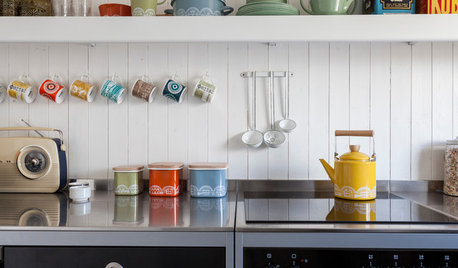Does sugar have a role in leaf cuttings?
lathyrus_odoratus
14 years ago
Related Stories

DECORATING GUIDESA Glimmer of Gold Leaf Will Make Your Room Shine
Make a unique, unexpected statement in any space with this precious metallic finish
Full Story
GARDENING GUIDES7 Ecofriendly Gardening Ideas That Also Cut Chore Time
Spend less time weeding, less money watering and more moments just sitting back and enjoying your healthy garden
Full Story
BUDGET DECORATINGSimple Pleasures: Treat Yourself to Cut Flowers
Enjoy priceless beauty with just a few inexpensive stems — and you don’t need fancy vases, either
Full Story
MOVINGRelocating Help: 8 Tips for a Happier Long-Distance Move
Trash bags, houseplants and a good cry all have their role when it comes to this major life change
Full Story
COMMUNITY15 Ways to Make Your Neighborhood Better
Does your community lack ... well, a sense of community? Here's how to strengthen that neighborly spirit
Full Story
Video Gift Guide: 43 Finds for a Festive Home Bar
Shake up a party-ready bar with gleaming accents, dashes of red and enough glasses for every lord a-leaping
Full Story
LIFEHow Do You Make Your Tea and Coffee in the Morning?
A morning cup is a must for many, and preparation comes in many guises. We look at coffee and tea habits across the Houzz community
Full Story
KITCHEN DESIGNKitchen of the Week: Upscale Barn Meets Industrial Loft Style
Warehouses and grasses inspire a South Carolina kitchen equally, for a look that’s as charming as it is unusual
Full Story
ARCHITECTUREHouzz Call: Show Us Your Logo!
A picture is worth a thousand words, but your company’s symbol may be worth its weight in gold. We’d like to hear the graphic details
Full Story
DECLUTTERINGFoolproof Ways to Declutter Your Kitchen
If you find yourself fumbling through cupboards to find what you’re looking for, it’s time to take action with these simple steps
Full Story



tapla (mid-Michigan, USDA z5b-6a)
lathyrus_odoratusOriginal Author
Related Discussions
new sugar maple leafed out poorly. is this normal?
Q
is this leaf scorch on sugar maple?
Q
Cut-Out Sugar Cookies??
Q
Help! Grafted Sugar Maple not leafing out.
Q
lathyrus_odoratusOriginal Author
lathyrus_odoratusOriginal Author
justaguy2
jodik_gw
lathyrus_odoratusOriginal Author
jodik_gw
lathyrus_odoratusOriginal Author
tapla (mid-Michigan, USDA z5b-6a)
tapla (mid-Michigan, USDA z5b-6a)
jodik_gw
tapla (mid-Michigan, USDA z5b-6a)
jodik_gw
calistoga_al ca 15 usda 9
tapla (mid-Michigan, USDA z5b-6a)
lathyrus_odoratusOriginal Author
tapla (mid-Michigan, USDA z5b-6a)
tapla (mid-Michigan, USDA z5b-6a)
wesley_butterflies
lathyrus_odoratusOriginal Author
lathyrus_odoratusOriginal Author
tapla (mid-Michigan, USDA z5b-6a)
lathyrus_odoratusOriginal Author
jodik_gw
meyermike_1micha
tapla (mid-Michigan, USDA z5b-6a)
meyermike_1micha
jodik_gw